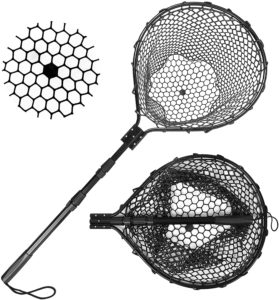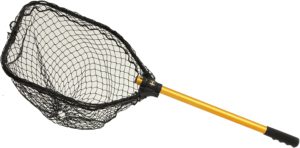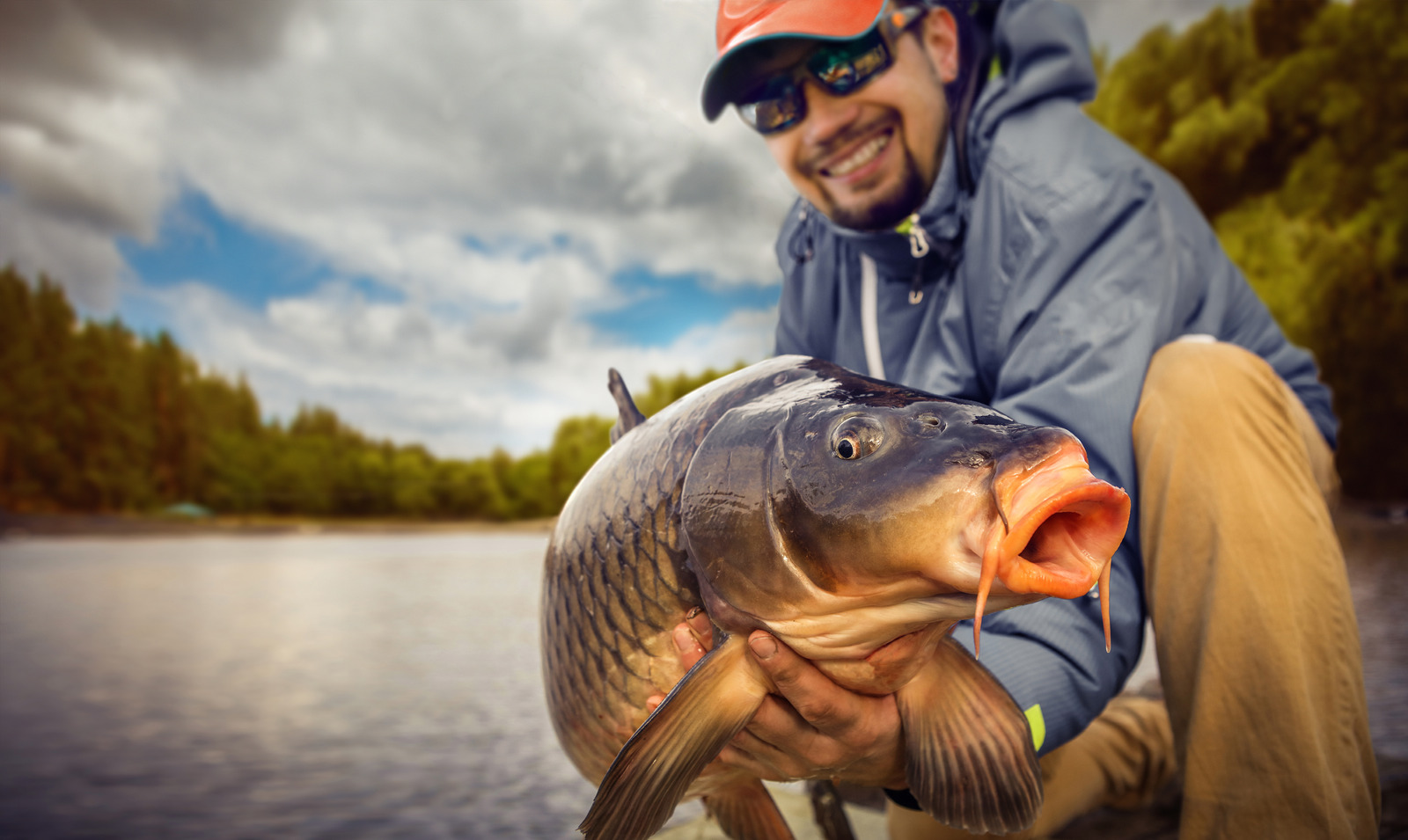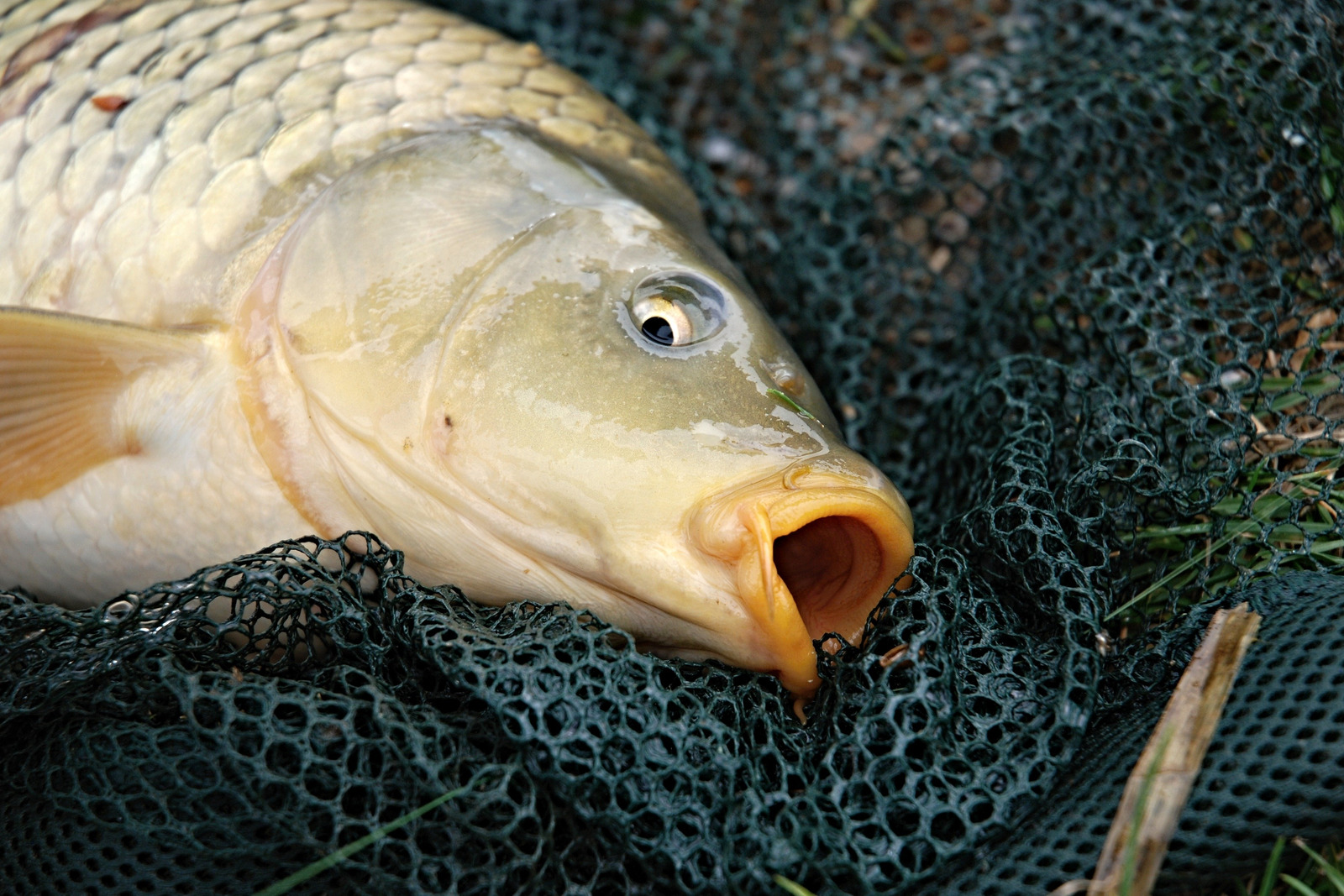Do Carp Bite Humans?
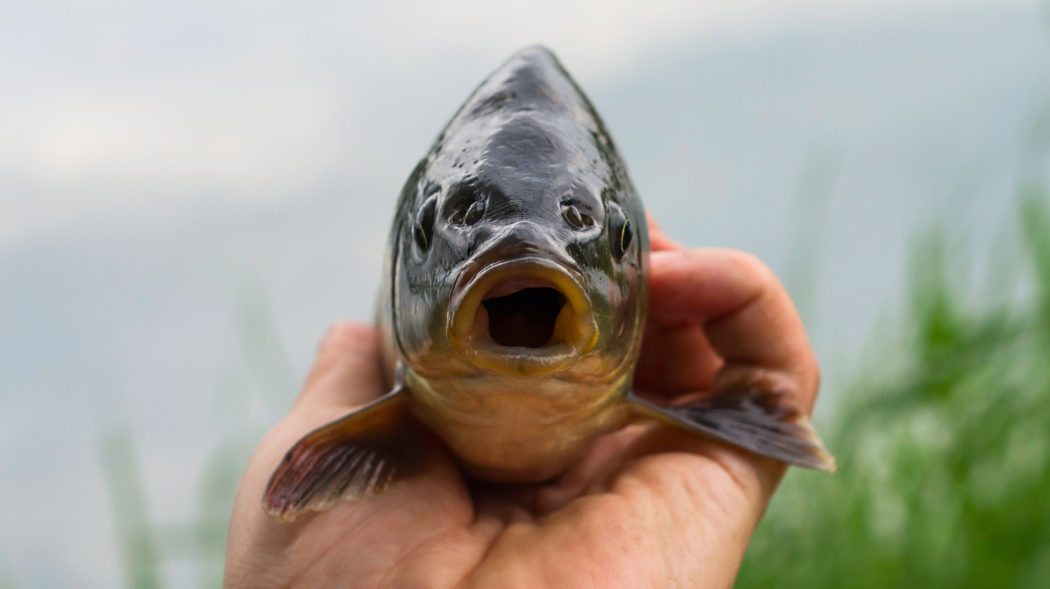
It’s pretty easy to tell that fish like pike, walleye, muskie and gar have the potential to remove digits. Their teeth are right on the edges of their jaws. Then there’s some fish – like smallmouth bass – that you have to know how to lip or you’ll nick your thumb on the small teeth further back in their mouths.
You certainly wouldn’t want to wade into their waters in flip-flops and cargo shorts. But what about carp? Do Carp Bite Humans? Carp are found in pretty much every waterway in the US, and some of them get BIG, weighing around 80lbs or more.
With such massive fish in abundant numbers and a virtually unlimited range, you’re bound to run into one eventually. Should you be concerned about sticking your hand or stepping foot into carp waters?
By the way, do you also know that there is another kind of carp which is a mirror carp? If you don’t and you want to know what it is, read this article that we have.
Do carp have teeth?
Although not immediately noticeable, carp do have teeth. They’re called pharyngeal teeth, and they’re located down in the fish’s throat, along the gills. They’re like elongated molars, and carp use these “teeth” to grind up food before they swallow it.
While these teeth are not sharp enough to cut, they are designed to crush. Carp crush hard nuts and shells with ease. So don’t go sticking your fingers down its throat.
So even though there is little worry from a carp’s throat teeth, it is still not a good idea to lip a fish for pictures. Carp are big, heavy fish and holding them up vertically in this manner will certainly break their jaws. Neither should you hold them up by the gill plates, which will absolutely damage their sensitive gills and condemn them to a slow and agonizing death.
If you are not sure what does a carp fish look like, we have an article here about what does a carp fish look like.
Bonus! – How to Hold Carp for Pictures
TIP: Have your weight/camera gear ready and within reach. You’ll want to take your pictures and/or measure the fish and return it to water as quickly as possible, to give them the best chance of recovery as you can. |
Fish Landing Net
These fish landing nets will keep your carp safe.
This carp landing net is made of a thick soft rubber mesh net that enables you to safely return newly captured carp to the water.
This fishing net is made from knotless mesh netting which reduces fish injuries.
Do Carp Bite Humans?
Carp are omnivores who feed exclusively below the surface, usually scouring the bottom sifting through mud and debris for tasty tidbits. While they are aggressive feeders, they are not truly predatory, meaning they’re not likely to attack anything that moves in the water.
To the contrary, young carp are often preyed upon by true aquatic hunters like largemouth bass and walleye. Carp have more reason to run from you than to attack you. Humans are not on their menu – unless, perhaps, you decide to swim in carp-infested waters in a suit made entirely of corn.
Can carp hurt you?
We’ve already determined that carp couldn’t really bite you even if they wanted to. But can they still hurt you in some other way?
Considering their size, weight, and power, some injuries are possible. Cuts from sharp fins and bruises from thrashing fish are commonly reported from anglers. Damage to gear is most likely to happen – I remember snapping a good pole on a massive carp on my first fishing trip along the Missouri river!
Looking at their pictures, you wouldn’t guess at first that carp are an acrobatic species. The silver carp has an infamous habit of leaping out of the water when startled by loud disturbances in the water, sometimes sailing over or landing right in passing boats.
The United States Environmental Protection Agency (EPA), recorded injuries that include “…black eyes, broken bones, back injuries, and concussions” caused by flying silver carp! You read that right. People have been knocked out coldby a fish!
That’s some pretty serious damage when you take into account that silver carp can weigh over 80 pounds and jump nearly ten feet above water. Worse if you’re in – or behind – a boat moving at around 20 miles or more an hour.
Silver carp jump at just about anything – onboard motors, passing trains, flocks of geese taking flight, even rocks thrown in the river. They’re the reason water skiing along Missouri is now excessively dangerous, as the fish tend to jump out right behind the boat and in front of the hapless skier!
Are carp dangerous?
Overall – with the exception of the paranoid silvers – carp are not considered dangerous to humans. If you decide to dine on them, you may find them delicious, particularly blackened, but take care to watch out for bones. There’s a lot of them, which puts many Americans off eating them (besides the oiler flavor of common carp).
If carp are dangerous, then the threat is most aimed at the environments they live in. Because they are hardy, fast-growing, and voraciously consume anything remotely organic, they easily out-compete native fish species for food and swimming space.
They have a taste for plants, and many suggest their habit of pulling them up to eat them or get at something under them creates foul, muddy water and ruins the local ecosystem.
Great efforts are made to curb the carp population in the rivers throughout the midwest. From 2010 to 2019, contracted Illinois fishermen pulled over 7 million carp from the Illinois River, but this was just a start.
So if you want to help out the environment, and have a little fun doing it, go hook yourself a carp. Don’t worry, they don’t bite (unless you’re a piece of corn)!
Reeling in the Facts
Do carp bite humans? Short answer: No. They are not known for biting humans.
Carp have pharyngeal teeth, which can crush with incredible force. You’d have to stick your fingers far down into their throats to reach them. This makes it impossible for them to bite you.
Carp are relatively peaceful omnivores who’d rather flee from humans than attack them. Silver carp are so skittish they’ll leap out of the water at almost any loud noise, injuring boaters and water-skiers in human-fish collisions.
They are not dangerous to humans, but they are invasive. Some fishers are contracted to thin their numbers from rivers throughout the midwest where they are out-competing and fouling the habitats of native species.
There’s no real reason to fear carp. They can be exciting to fish for, put up a great fight when hooked, and make a better fish fry than most give them credit for – especially when fished out of clear water and immediately iced.
Carp should be more afraid of us biting them! Why not give it a try?
As an Amazon Associate, Fishermen's Angle earns from qualifying purchases. We get commissions for purchases made through links in this post.

